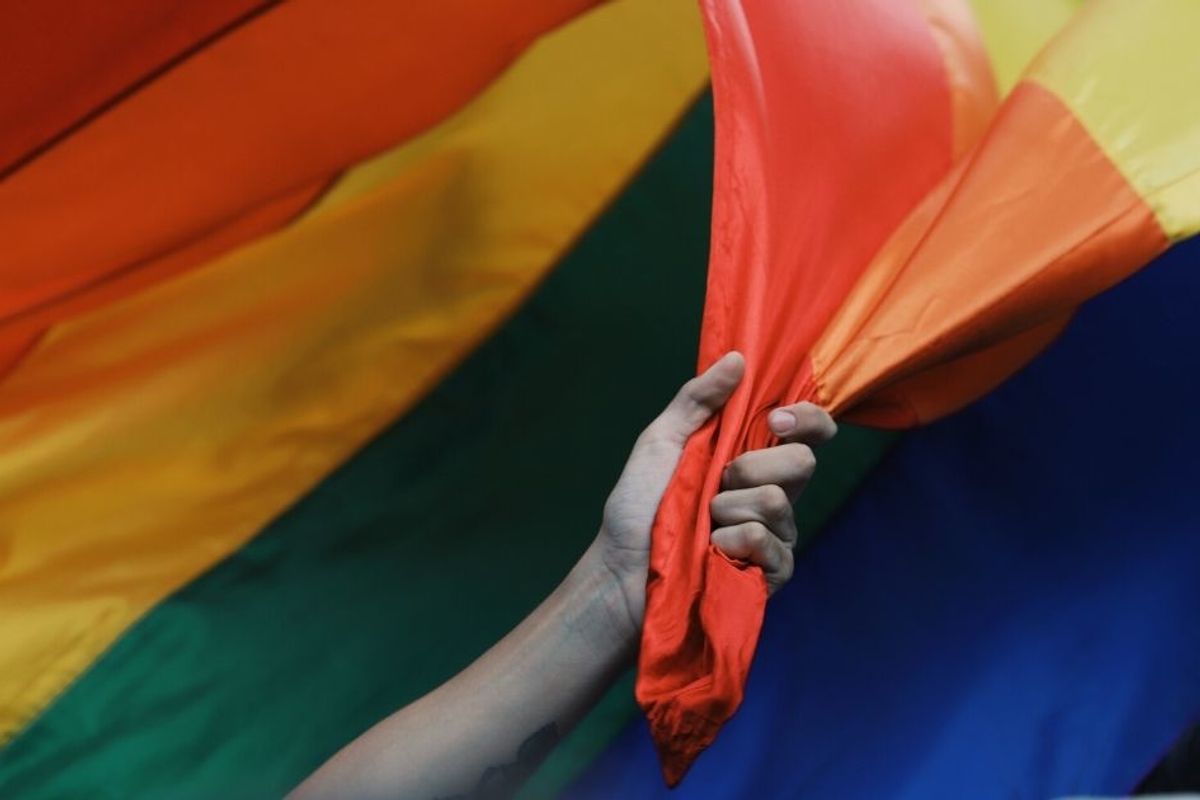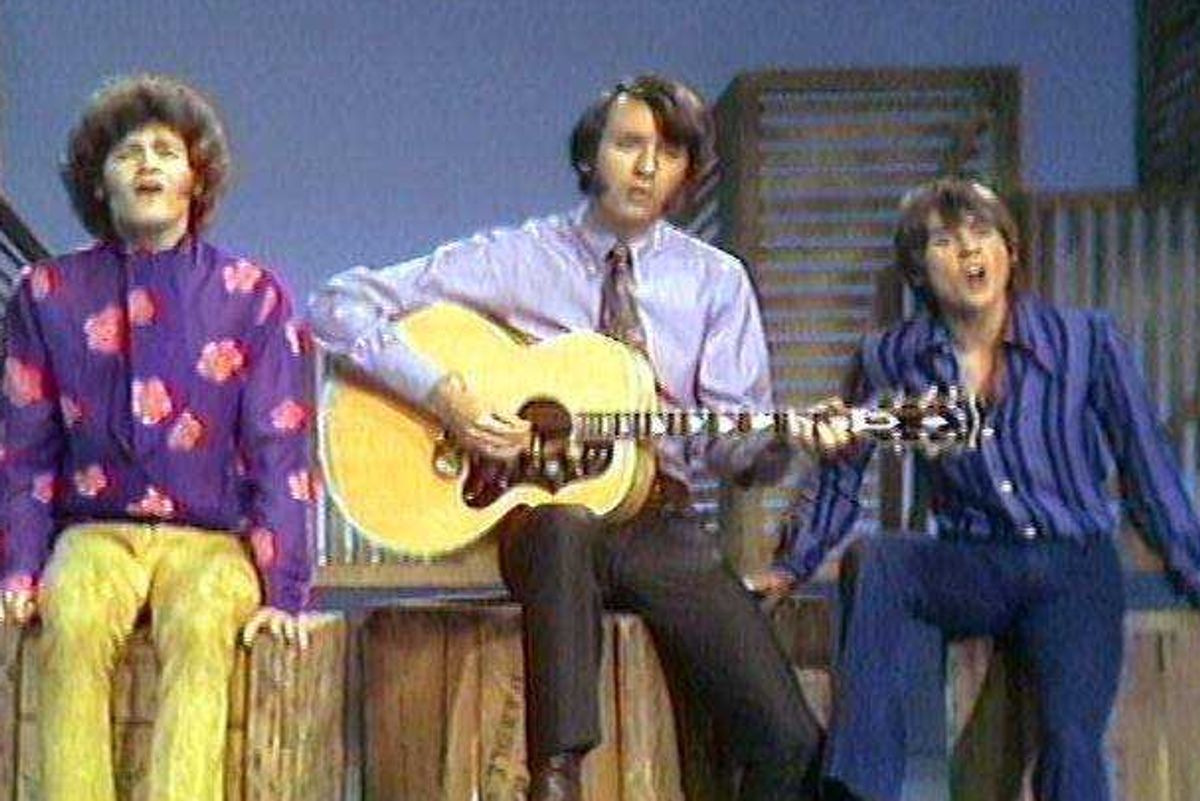
Editor's Note: Raleigh Van Ness is a pseudonym used by Upworthy in order to protect the anonymity of the author.
It's hard to pinpoint the moment I knew I was queer. Growing up, I knew I was different. I liked boys because I was told I should like boys. I chased Chris for a kiss in Kindergarten on a whim and a dare—not out of any true want or desire. In fifth grade, I dated Brandon for his ball cap. It was a status symbol. It got me clout with the hip kids—the cool kids, you know, the girls who wore cropped sweaters and acid-wash jeans. While I had a steady stream of boyfriends in middle school, I did so to appear normal. To be normal. Plus, I couldn't possibly go to the Halloween dance alone, so I didn't.
I held Tyler's shoulders and swayed to Savage Garden.
Terrance sang every word of Boyz II Men's "I'll Make Love to You" in my ear.
But the truth is my eyes weren't for them, not at 10, 12 or 17. I was—and always have been—attracted to women.
The first girl I recall liking was my best friend, Kathlyn. She was a sweet girl. A kind and loving girl. She was also beyond smart. The bookish type. Her long, brown locks regularly covered her eyes. But there was something about her gap teeth and freckled skin that enticed me. It entranced me. I wanted to be more than good friends.
I began having fantasies which would make you blush and would make my mother ashamed.
In high school, I scoured the scenes of scrambled porn—which, for those unaware, is how kids watched X-rated films in the pre-internet days—for curved lips and hips. For breasts and bare buttocks. I became obsessed with women's reactions and the sight of their satisfaction. I wanted to know that feeling. I wanted to share it with another.
On occasion, I've flirted with my desires. I've kissed and caressed some amazing women in my life, but no one knows it. Well, besides a few drunken college encounters caught on camera. But no one knows it because I am living a double life.
I am married to a man.
I am not alone. According to the Williams Institute at UCLA, 4% of adults in the United States identify as lesbian, gay, transgender or bisexual. This means there are approximately 9 million LGBTQ individuals in America, and many more live like me, in silence and in secret. While living in the closet can be isolating—scratch that: it can be upsetting, enraging and (some days) it fills me with shame—during Pride Month, I am humbled. I am thankful. I am accepted and understood.
You see, when I see a rainbow banner or flag I smile shyly, coyly because I feel seen. Even though I am closeted, I feel a sense of community. I feel like I belong and I am understood.
During Pride Month, I feel I am able to celebrate myself completely. Fully. I've spent my whole life ashamed of who I am—of what it is I feel, want, need, who I love and what I deserve—but seeing others embrace LGBTQ individuals makes me love myself and embrace myself. Seeing others celebrate Pride makes me value myself.
Pride month reminds me of how far I've come. Sure, I haven't "come out" to my friends and family, but I have come out to myself, and that is worth celebrating. Acknowledging my true self is half the battle.
Pride makes me feel backed. Supported. Like I have a family and home.
I also feel an immense sense of gratitude during Pride. I am thankful for the voices of others. For the strength of others. For the fight of others, and hope one day I can join them. I hope one day I have the courage to be myself. Loud and proud.
Make no mistake: There are days I still struggle. I hate myself. I am angry with myself. I feel like a failure and a fraud. On these days, I convince myself I have no community. Until I am open and honest, I am neither straight or queer. But while closets hide things, they don't keep secrets. Silence does not take away my identity. I am a wife, mother, runner, and a writer.
I am also a proud queer woman.
- Amid backlash, Target still launched its annual LGBTQ pride line ... ›
- Homophobe claimed Pride Month is disrespectful to the military ... ›
- Homophobe gets flawlessly murdered by words for comparing Pride ... ›
- Boyz II Men parody 'I'll Make Love to You" - Upworthy ›
- BMW faces scrutiny over Pride Month - Upworthy ›
- Tig Notaro comes out to her sons - Upworthy ›
- Wishing all the homophobes a super uncomfortable Pride month - Upworthy ›
- The human kiss evolved from primate grooming rituals - Upworthy ›



 Millennial mom struggles to organize her son's room.Image via Canva/fotostorm
Millennial mom struggles to organize her son's room.Image via Canva/fotostorm Boomer grandparents have a video call with grandkids.Image via Canva/Tima Miroshnichenko
Boomer grandparents have a video call with grandkids.Image via Canva/Tima Miroshnichenko

 Worried mother and children during the Great Depression era. Photo by Dorthea Lange via Library of Congress
Worried mother and children during the Great Depression era. Photo by Dorthea Lange via Library of Congress  A mother reflects with her children during the Great Depression. Photo by Dorthea Lange via Library of Congress
A mother reflects with her children during the Great Depression. Photo by Dorthea Lange via Library of Congress  Families on the move suffered enormous hardships during The Great Depression.Photo by Dorthea Lange via Library of Congress
Families on the move suffered enormous hardships during The Great Depression.Photo by Dorthea Lange via Library of Congress
 kenan and kel nicksplat GIF
kenan and kel nicksplat GIF  season 6 GIF
season 6 GIF 
 Vintage portraits of a woman and two children, showcasing elegant attire of their era.
Vintage portraits of a woman and two children, showcasing elegant attire of their era. Three friends enjoy a lively music session indoors.
Three friends enjoy a lively music session indoors.